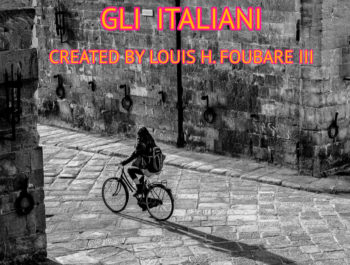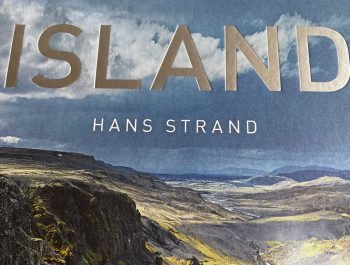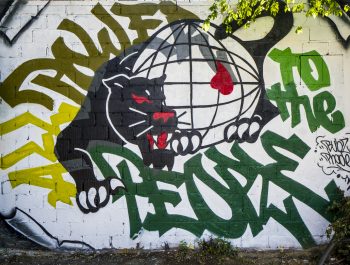Quiet Contemplation
“I hope that my work will encourage self-expression in others and stimulate the search for beauty and creative excitement in the great world around us.”
– Ansel Adams
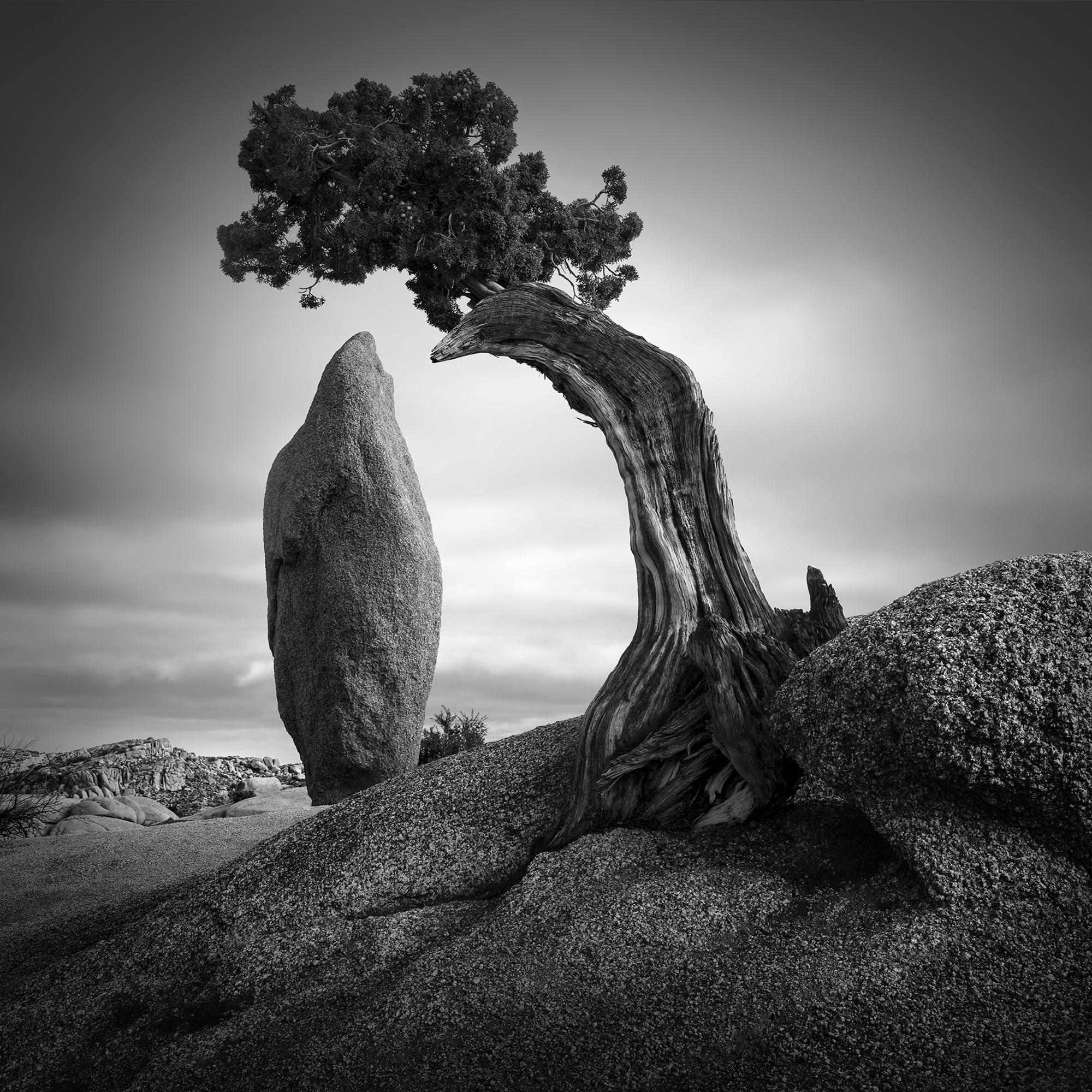
I came across this quote a few years ago and realized what a lasting impact his words had on me. Adams’ photographs introduced me to a landscape that I only dreamed of seeing as a young child. They heightened my curiosity to explore the American West. My photographic journey has taken me to these landscapes and many others and allowed me to immerse myself in the beauty found throughout North America.
I wasn’t introduced to photography in a formal manner until my college years. My graphic design professor headed our fine art photography program, which worked out quite well since they shared a connection in my mind. Graphic design is based on good composition, and that also forms the basis of a good photograph. I’m indebted to him for the foundation that his instruction provided. In addition to his coursework, I took a couple of technical photography classes that laid the groundwork for film photography. I worked for Kodak during the summer months and moved on to a commercial photography studio upon graduation. We photographed products for Owens Corning, LOF, Owens Illinois, Dana Corp, etc. Technically speaking, it was a good beginning but not overly satisfying. I was soon hired as an art director at PBS, where I worked for 30 years. We started using Photoshop in our department in the late 80s – Photoshop 1.0. There were no layers, no undos!
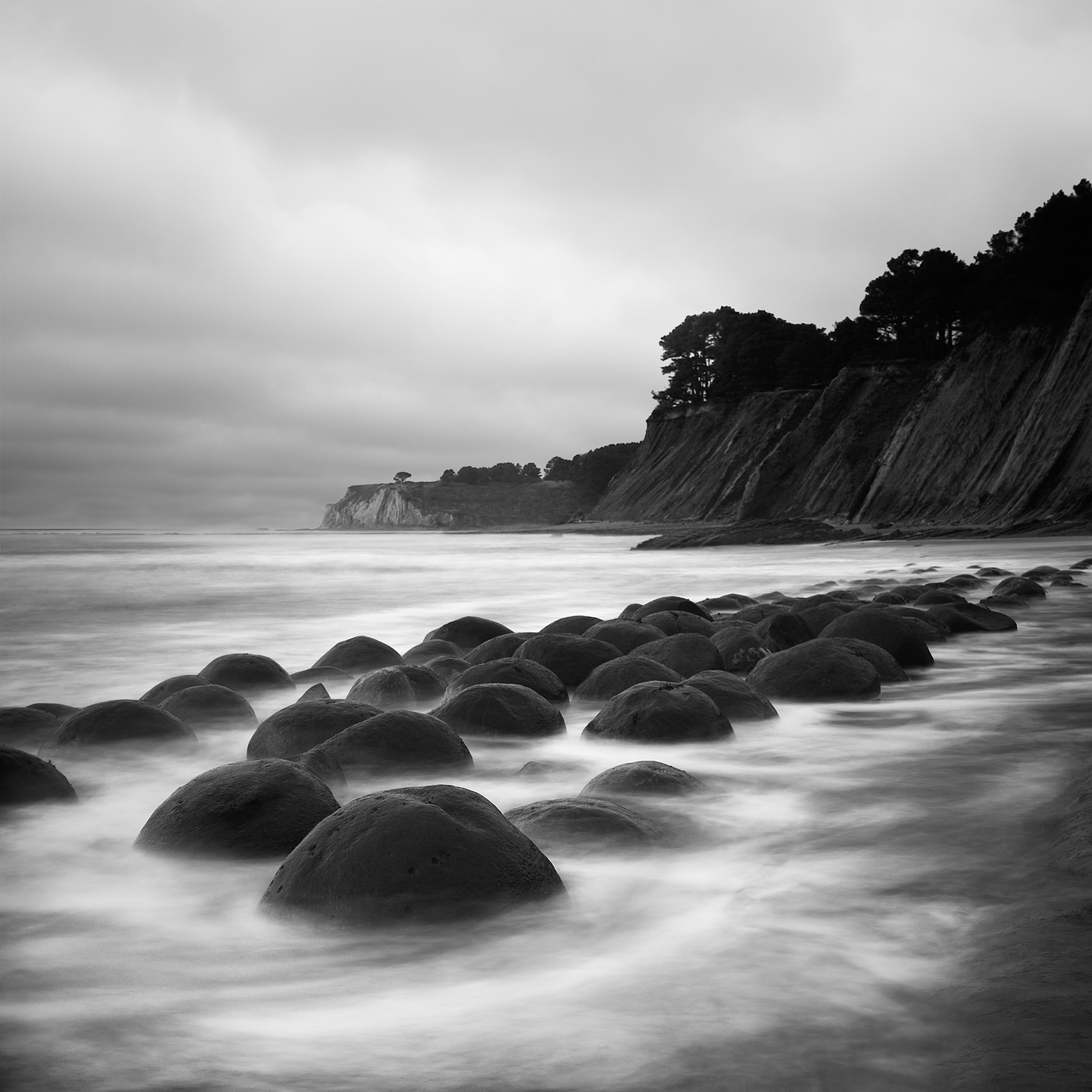
Photography didn’t become a serious part of my life until around 2000. I needed to do something beyond my 9-5 job, so I picked up my camera and started shooting again. As time progressed, my work transitioned from simply capturing images from nature to fine art photography. I’m often asked what constitutes fine art photography. I feel that it’s centered around one’s thought process – how a person conveys his or her vision. It’s more about the ‘art’ than the ‘photography.’ Using a camera to take a photo simply records what the camera saw as the shutter opened. The result is a straightforward capture. In fine art photography, an artist is using a camera as a tool to a different end. A resulting image may look considerably different than what was captured. It represents a vision of what the artist wants to share rather than documenting what existed.
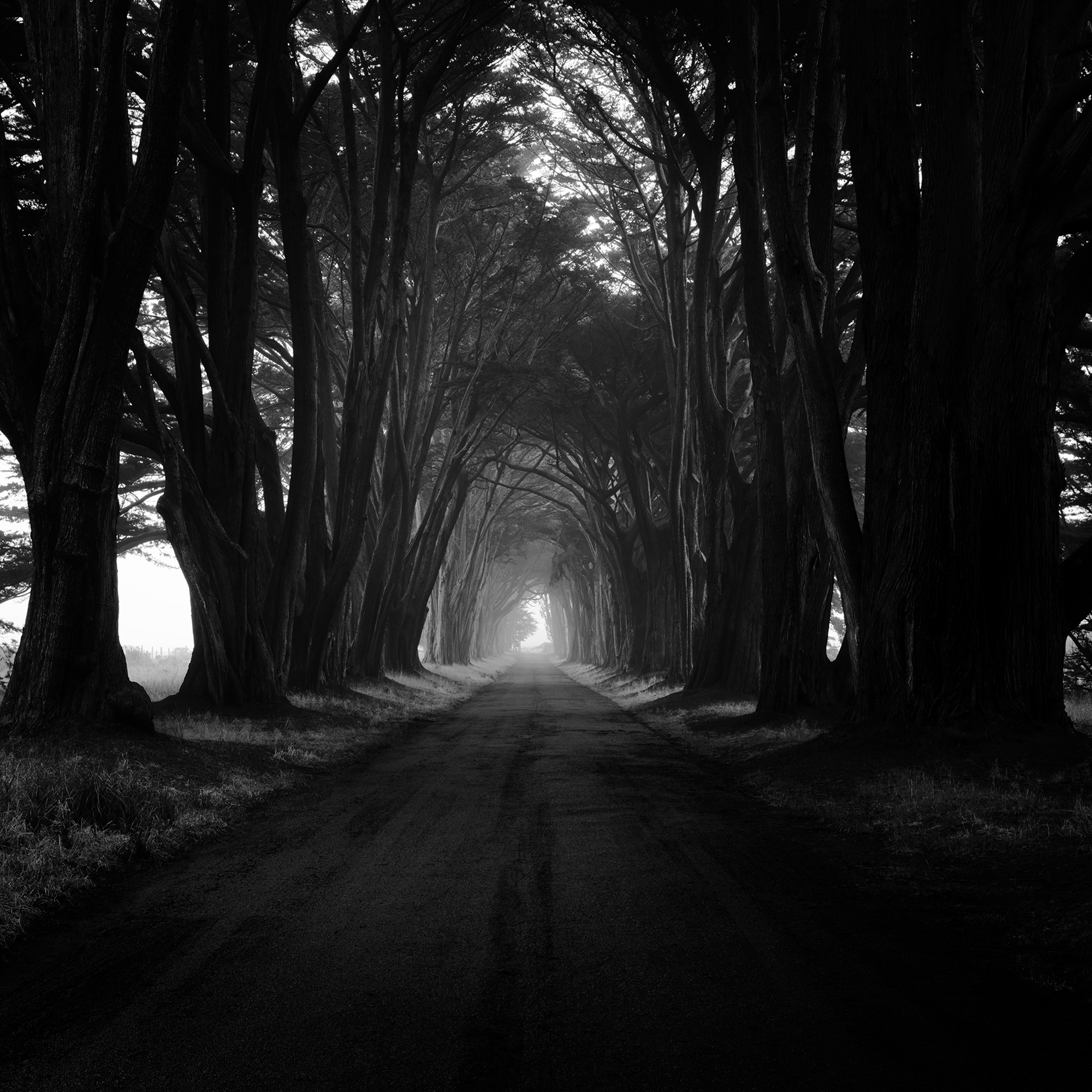
I consider myself an avid adventurer and am happiest when I’m off the beaten path exploring remote locations throughout North America. I’m particularly drawn to the West and to the shores of Lake Superior – places that renew my soul and that I explore repeatedly. I’m always at peace during my visits, often capturing images for weeks, even months. More often than not, the experience is as much about spending quiet time in the outdoors as it is about photography. Without one, the other wouldn’t hold much meaning – they are inseparable.
Last year I was on the road a lot, driving nearly 15,000 miles. Being somewhat of an introvert, I enjoy traveling solo. I’m always glad to get away from the busy activity that surrounds everyday life, even when I’m not being productive photographically. I slow down once I’m situated and that provides an opportunity to begin exploring the landscape.
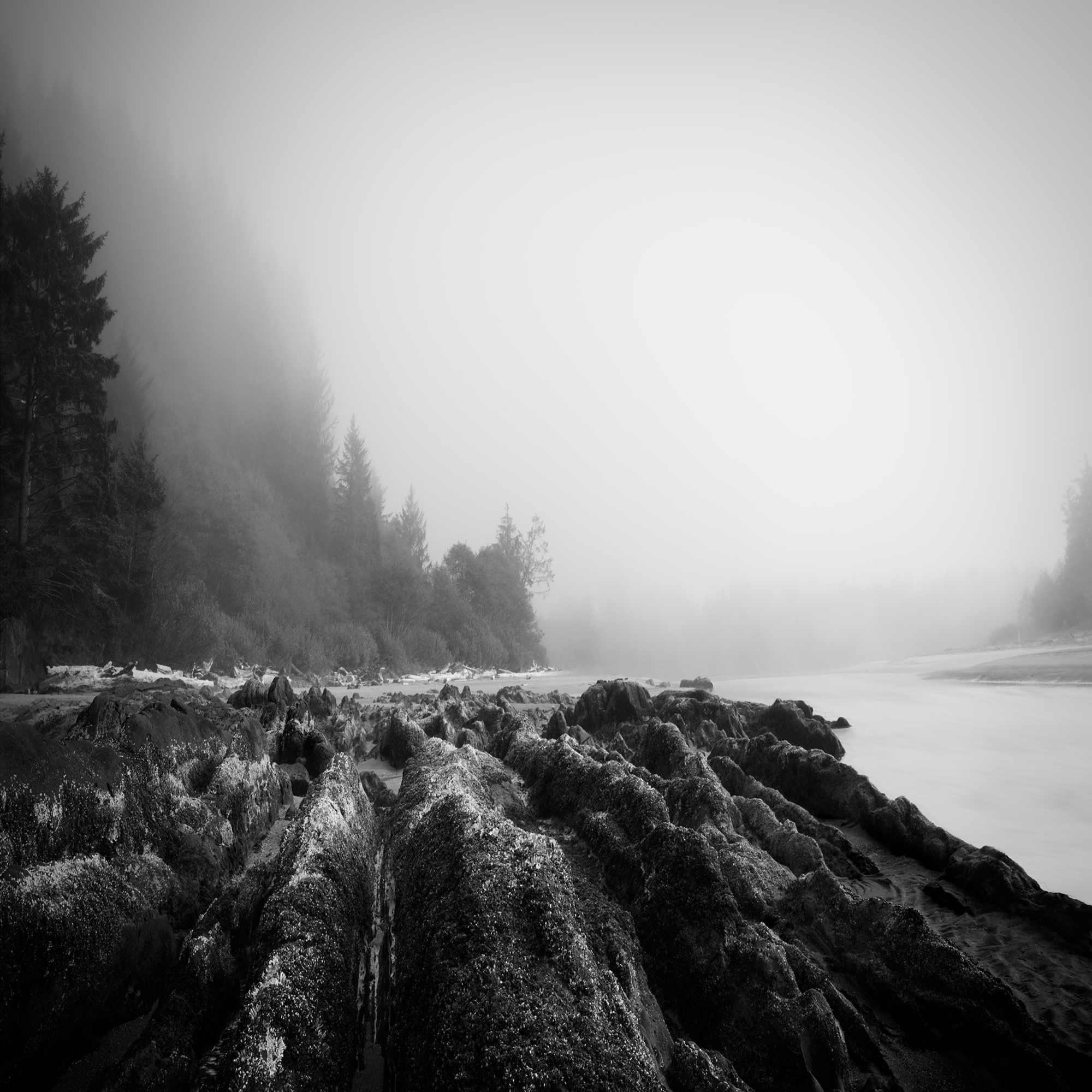
I spend as much time scouting as I do capture images, probably more. This avoids the consuming task of setting up my tripod and positioning the camera – something that I do for every capture. Simply shooting various angles/compositions with my iPhone allows me to work quickly. Later on, I evaluate the shots and decide which composition is worth pursuing, if any.
Much of the time, none make the cut. While many photographers come home with thousands of frames, I rarely have more than a few hundred, sometimes less. This is because I take the time to think through my compositions.
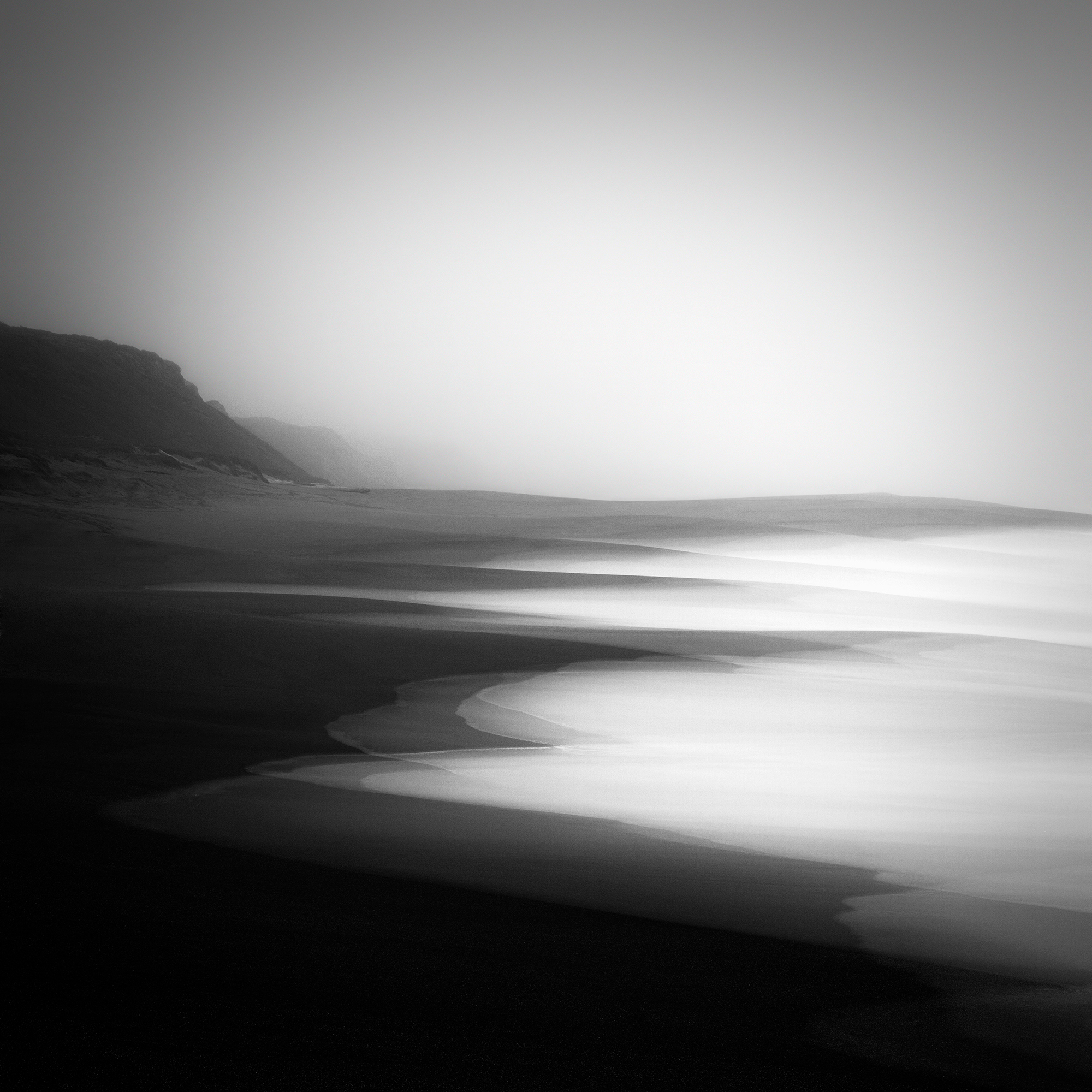
Over the past 20 years, my work has transitioned from color to black and white. While that provides consistency in my portfolios, it creates a quandary when I produce an image that looks better in color. That was the case for a photo I captured during the weeks that followed my annual Lake Superior workshop. The photo is a panorama of my favorite bay, a location accessible with an arrangement that I’ve made with First Nation people. It’s comprised of several smooth, undulating, off shore islands that are topped with pines. Sweeping waves fill the frame from left to right. Even though I reduced the saturation a great deal, I still view it as a color photo. I haven’t decided whether to keep it as is or convert it to black and white. Like many images, it may never make the cut.
I’m often asked why I chose to work in black and white. On an emotional level, I feel that black-and-white photography disconnects the viewer from what they are accustomed to seeing.
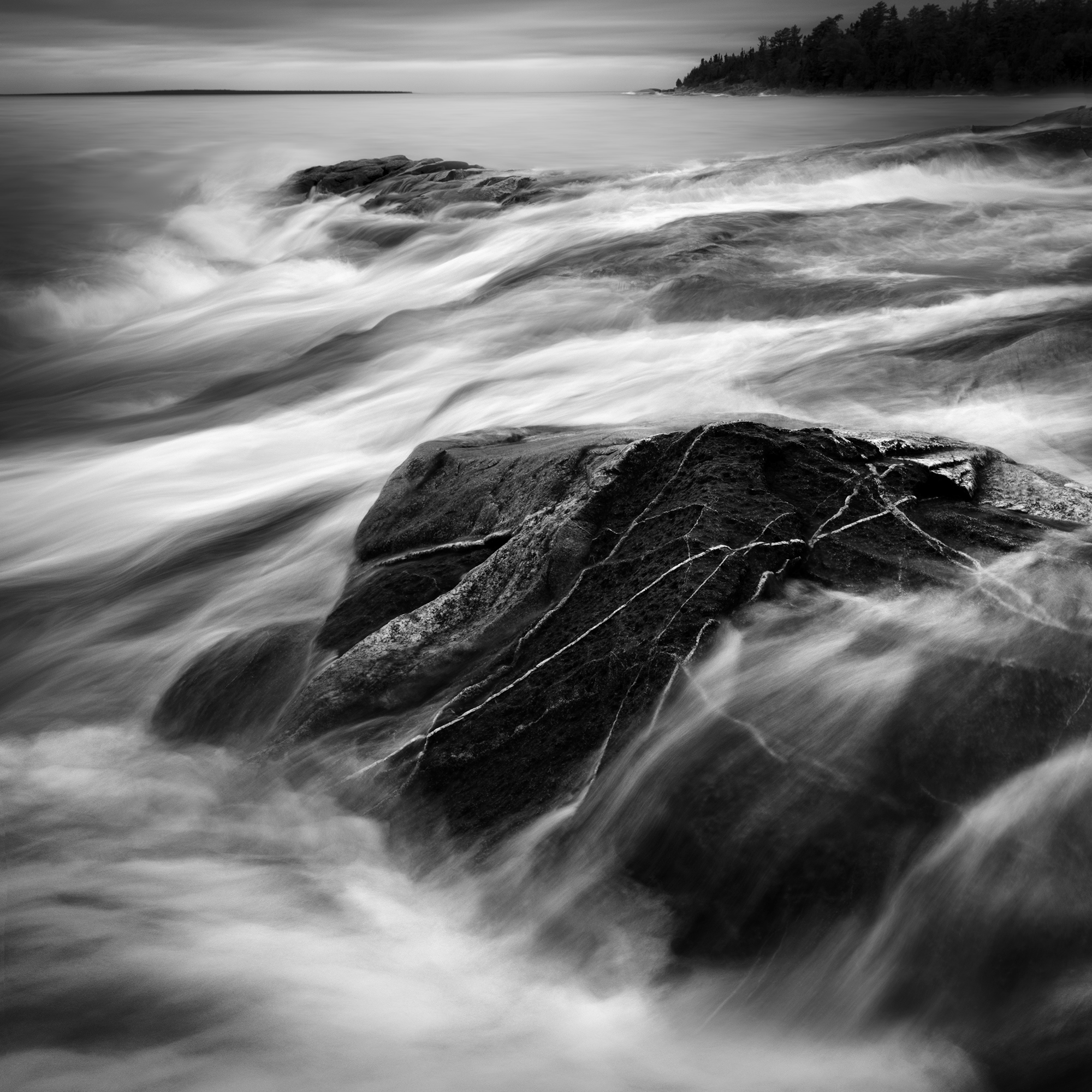
Black and white images are no longer simply a snapshot of the world; they become an abstraction that changes how they are interpreted. As Dominic Rouse once said, “color is everything; black and white is more.” I couldn’t agree more. Additionally, they allow for consistency in my various portfolios.
I feel that I’m a bit of an anomaly in the world of photography. While many photographers use Lightroom for most, if not all, of their work, I only use Photoshop. I view my captured image as only a starting point. While I prefer to make things easy on myself, there are times that I labor over a photo for many hours, often coming back to it time and again. For example, I shot an abandoned adobe church a couple of years ago in Lamy, New Mexico. Parts of the church were in disrepair. The property was strewn with junk and vehicles. The message board in front of the church was quite distracting. Instead of shooting the church as I saw it, I set about shooting ‘assets’ that I used to piece together a church at a later time, one that would be to my liking, on a natural landscape totally removed from Lamy. I kept my eye out for a landscape that would fit my vision and found one a few days later. It needed to be captured at the same time of day and at the same angle as the photos of the church otherwise, the final photograph would not be believable. After hours of work placing the church in its new environment, I’ve completed the photo but haven’t decided whether it will be added to my portfolio.
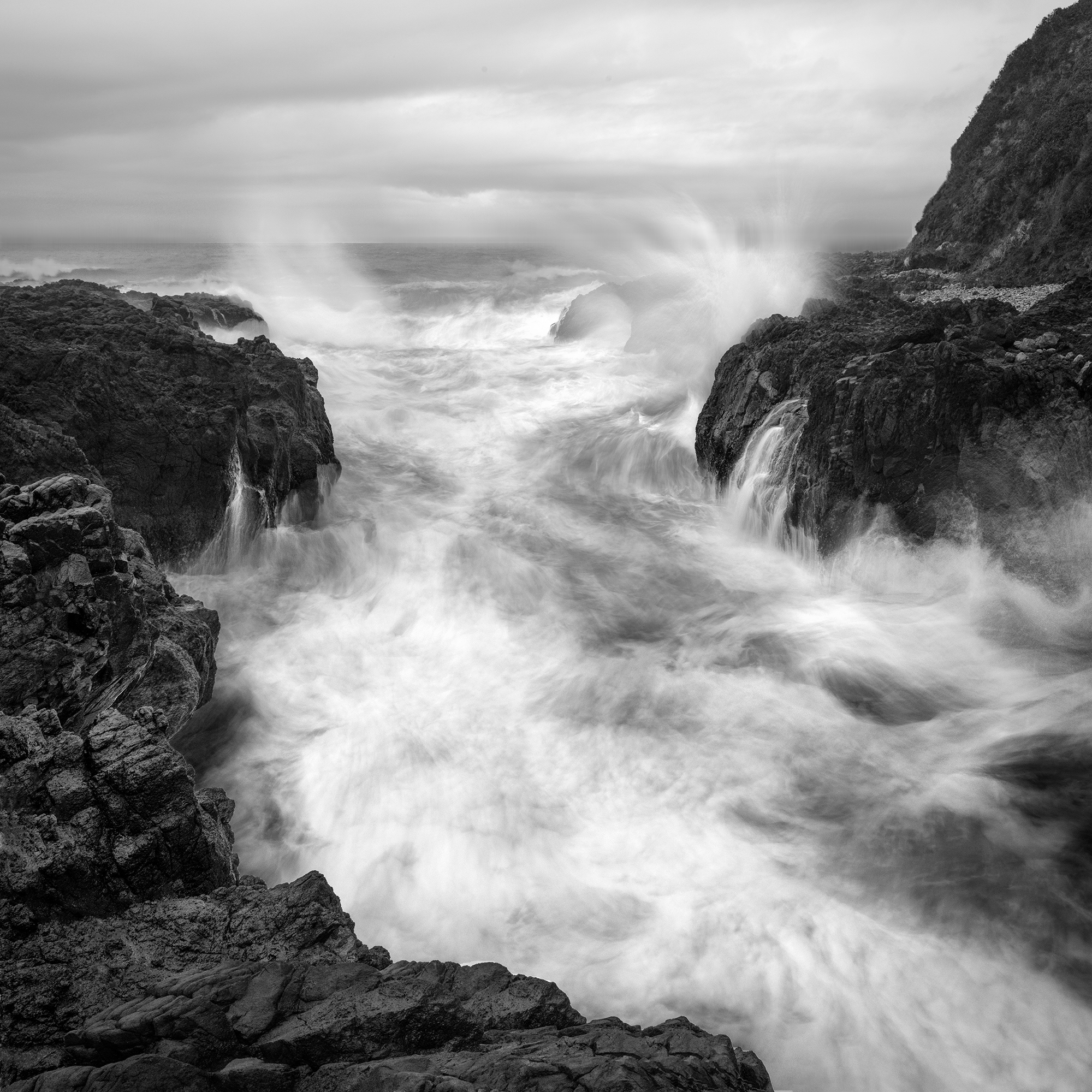
Needless to say, I prefer working on a photograph that requires only minor tonal adjustments – adjustments that can easily be made with tonal curves, then fine tuning with masks/curves. But that doesn’t always fulfill my vision. Not unlike what painters have done for centuries, I take the liberty of changing elements within a frame to render a composition that is pleasing to my eye. Because of this, some of my completed photos may not have the same look or mood as what you would have seen had you been standing beside me when I captured the image. Some may disagree with this philosophy of photography and I respect that. But I feel that it’s important to follow your artistic vision. While I change elements from time to time, most of my work is pretty straight-forward in terms of being representative of how it appeared in nature.
Composition takes center stage at my annual workshop at Rock Island Lodge on the eastern shore of Lake Superior, in Ontario. Without a good composition, you have little to work with. Many of the images in my portfolio come from that area – locations that I share with my workshop participants. During the workshop I share a multitude of Photoshop techniques that I use to create my photographs. Participants have ample time to apply those techniques to the photos that they’ve captured during the week. The lodge property is an idyllic location to immerse one’s self in photography. I’ve explored the shores of Lake Superior for the past four decades, so I know it well. It is a sublime place, relatively unknown to the photographic world.
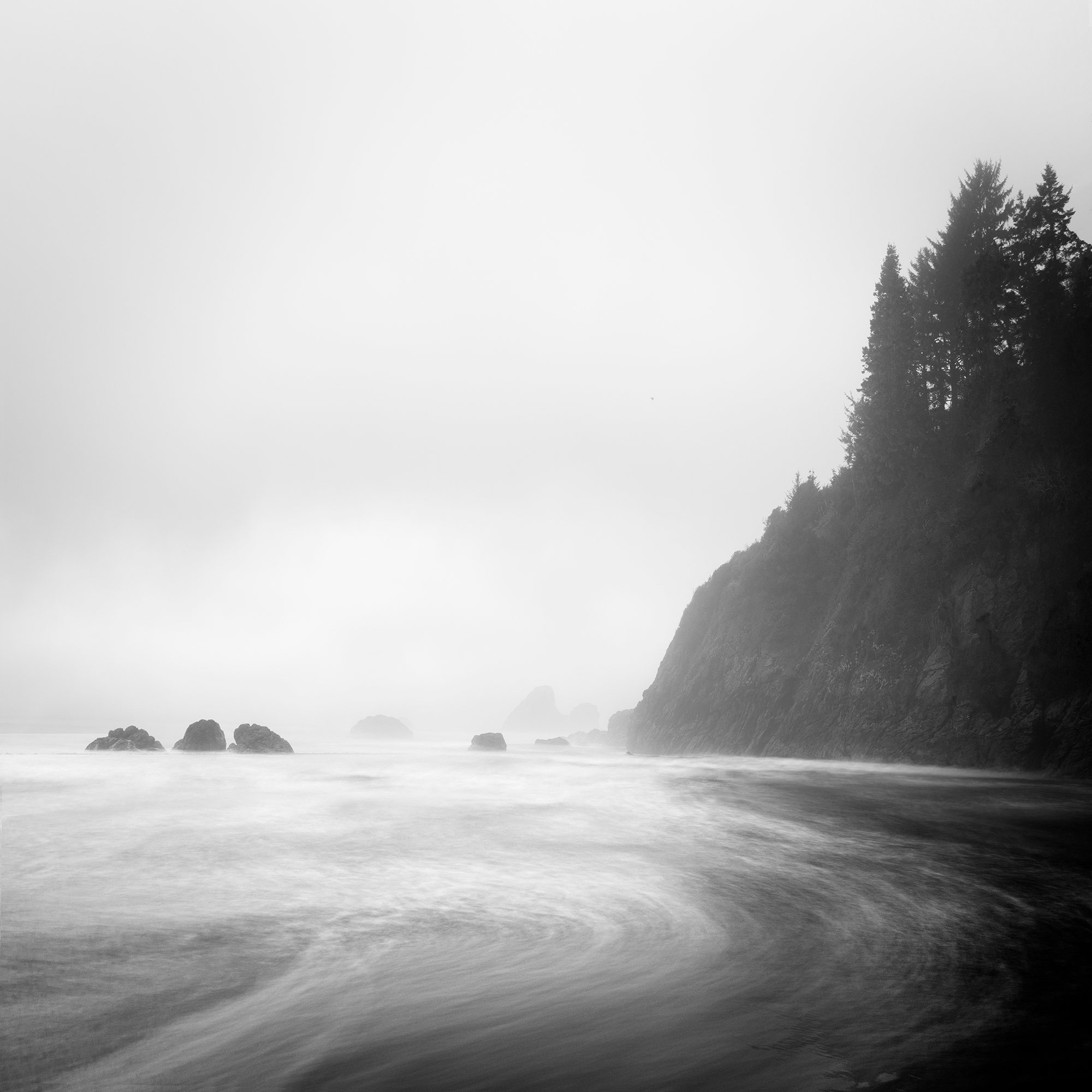
I’m passionate about wilderness and its protection. A majority of my images illustrate natural beauty that can not be replaced once it’s lost. I feel that it’s important for me to document the splendor provided by these landscapes before they disappear. My travels have taken me to many of the country’s national parks, monuments, and forests, as well as remote wilderness areas often controlled by the Bureau of Land Management. Each controlling agency has a different set of rules and guidelines by which they operate. It seems that much of our public land is valued by the amount of use it receives. In heavily visited areas, that equates to a proliferation of signs, railings, roads, and parking areas that detract from the look and feel of the very thing that we seek to experience. With increased usage comes an influx of commercial establishments, noise, traffic, and an overabundance of people on the trails, all of which detract from the natural world.
Public lands were set aside to protect them from human exploitation. They offer intangible benefits that are in direct contrast to a dollar amount that might be placed on them. Human development, climate change, political whims, and the search for energy encroach upon the land at an ever increasing rate. As this continues, these treasured places may not remain for the enjoyment of future generations. Pictographs, cliff dwellings and other culturally significant sites become subject to vandalism and looting. Mining for oil and gas disrupts the environment and leads to serious consequences. Off- road vehicles carve into the Earth’s fragile crust, which leads to erosion, often taking decades to heal. I witnessed the disastrous results of such activity on a recent visit to Factory Butte in Utah. In 2019 the Bureau of Land Management opened 5,400 acres surrounding the butte to unfettered off-road use. I was shocked by the multitude of tire tracks cut into the landscape and the resulting haze that filled the air for miles, caused by dust generated by these vehicles. I have photographed this butte numerous times over the last two decades – it is forever changed.
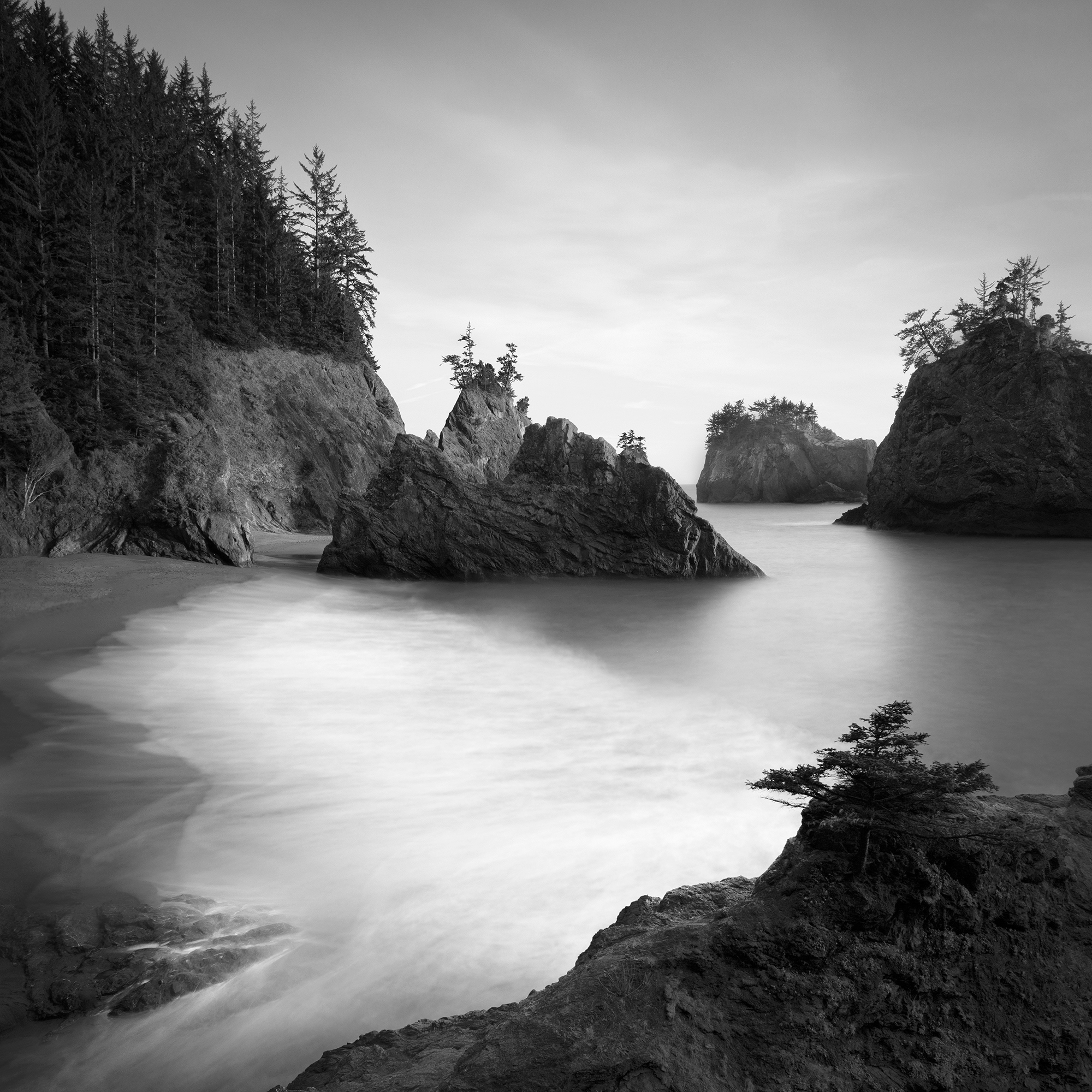
We must all work together to safeguard against these types of imprudent decisions if we hope to save public lands. The pressures from a growing population and the increased visitation resulting from it, combined with the shortsightedness of those in charge, are the greatest enemies of unspoiled land. Our planet is worth the protection that only we can provide.
My hardcover book, “Quiet Contemplation,” rose to the top of my “to-do” list in 2017 when I was diagnosed with multiple myeloma. This type of cancer robs one’s bones of calcium before it’s brought under control. I lost 5 inches in height because of vertebrae compression and was not able to walk, unassisted, for eight months. I’m thrilled to say that I’m able to be back on the trail again! Thanks to the support of my family, friends, colleagues, and three years of work, the book became a reality last year. The photos are my interpretation of a world that has touched me in one way or another – a magnificent world that awaits exploration.
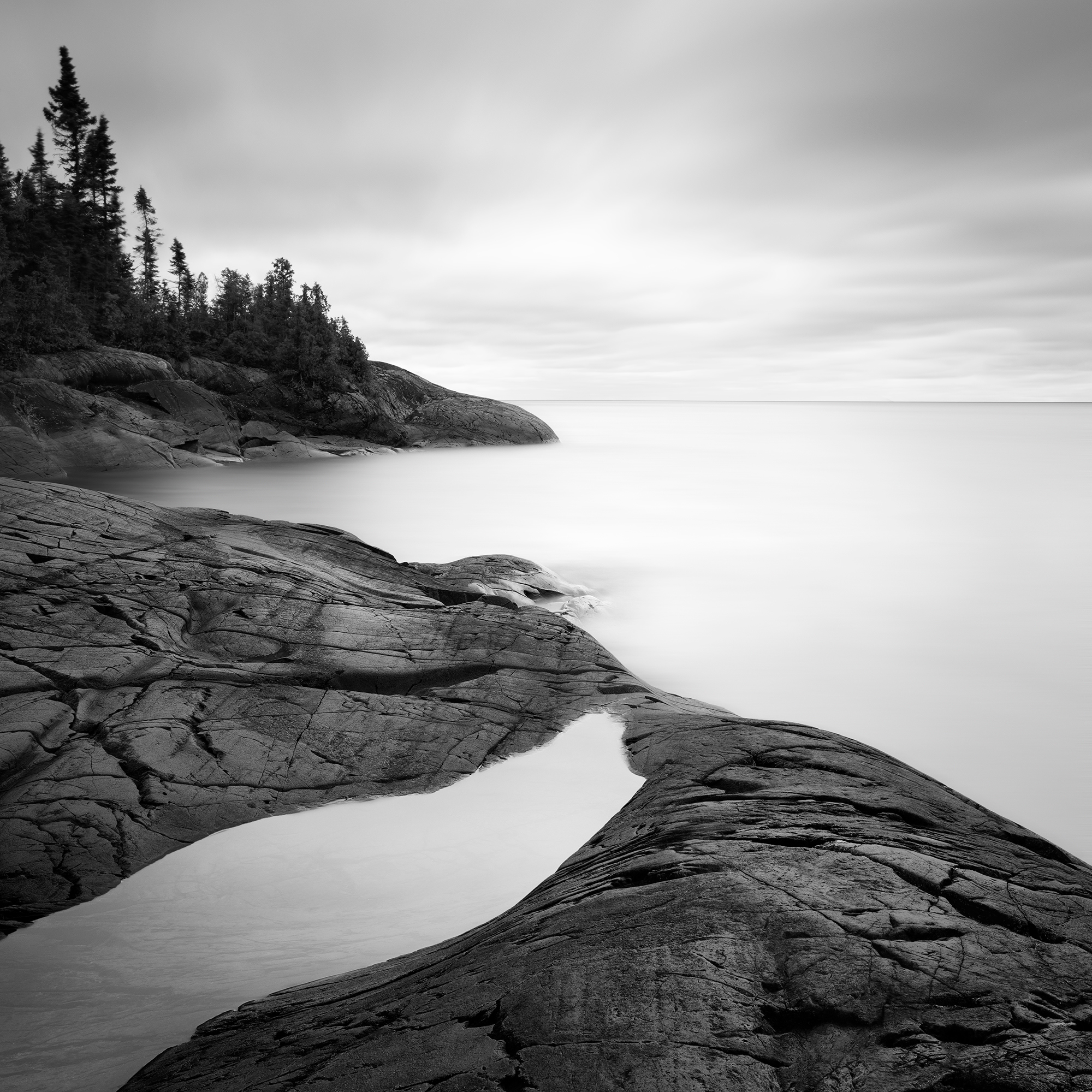
Maybe they will stir an emotion of a place that you have visited or a place you might like to explore. If nothing else, simply allow them to instill a sense of calm.
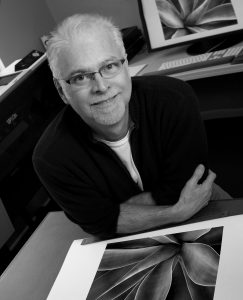
In addition to others, I thank Kevin Raber, Art Wolfe, Charlie Cramer, and Alan Ross who wrote copy that I used as introductions to the various sections of the book. It was printed by Hemlock Printers, Ltd., in Vancouver, BC; one of the best printers in North America. I chose McCoy Silk 80# cover weight paper. Duotones were used to provide added depth to the photos. Hemlock used a stochastic printing technique that provided for outstanding print quality. They are to be commended in every aspect of production!
If you’re interested in purchasing a copy of the book, contact me, or log onto my website and click on the BOOK tab. Either way, I will ship the books to you. If you’re interested in registering for my workshop, I’d be happy to email you an overview. You can click on the WORKSHOP tab of my website for additional information and to see what past participants have said. NOTE: I placed an ad in B&W magazine that will appear in the February issue, and three participants are repeating the course next year. I’m guessing that it will fill quickly. So if you’re interested, get with me to reserve one of the remaining spots.
Web: www.bellimages.com Email: [email protected] Phone: 419-308-2168
Jan Bell
January 2023
, OH
Bell’s work reveals an intimate view of the natural world, reaching into the subtle beauty within a form. Growing up on a farm in the flatlands of the midwest instilled an appreciation for the land. This innate passion has continued into his adult life and translates as the work you see today. Each photo represents an opportunity to consider the subject, almost apart from its meaning or function. Whether it be the inner folds of a plant, a sand-swept dune, or a distant coastline, Bell reveals only as much as he cares to share. The pursuit of untouched landscapes has taken him all over North America, typically photographing for weeks or months at a time. This love of the land, coupled with a love of fine art photography, combine to make his expressive prints. Throughout Bell’s career, his work has been exhibited in galleries throughout the U.S. His photographs have been published in B&W magazine as well as books. He has garnered numerous awards, with the Ansel Adams award topping the list for his “Agave” photo, which is now in the permanent collection at the Toledo Museum of Art, and the University of Michigan Art Museum. www.bellimages.com





